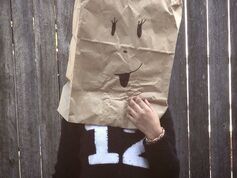Now that I have your attention, let me tell you about fragmented truths, or fragments of truth. First, rumour. Originating from the Latin word for ‘noise’, rumour is an exchange of information whose accuracy remains unestablished (Brouksy, 2014). The content within and the behaviour around rumour sit on the fringes of fact and control; both fragile and ephemeral (Brouksy, 2014). Such information tends to arise among people who do not necessarily know each other; they are merely vehicles for the transmission of highly charged information (Stewart & Strathern, 2020). “Rumours often circulate most intensively at times of uncertainty or unrest” (Kroeger, 2017). Rumours in this sense are a reflection of particular beliefs and views about how the world works at a particular time and place (Kroeger, 2017). Historically, different narratives emerge during crises (Ali, 2020). What do the rumours of today uncover or indicate about our present? Is it a loss of confidence in established authorities (Gusterson, 2017)? How do rumours start and why do some flourish while others fizzle out? Truth in modernity is characterised by the value of personal experience and opinion over data-driven science (Ofri, 2021). Vaccine Anthropologist Heidi Larson views rumours as ecosystems that need to be rehabilitated in their entirety - not simply the pulling and removing of one thread from the interwoven network. How do we contain outbreaks of misinformation? We build trust and truth chains. Trust, says Larson, is a currency that can be created, eroded, and rebuilt. We strengthen trust by listening to the stories behind the rumours, and not falling into the trap of debunking falsehoods and fears in the face of despair. Next, gossip. Unlike rumour, gossip tends to be shared in more intimate situations or spaces and is often supported by evidence, although this is difficult to verify as it draws on biases and prejudices. Also unlike rumour, gossip is not usually rooted in past experience, but rather consists of up-to-date knowledge, an element of cleverness, and the ability to be vigilant (Monson, 2020). It requires wit, verbal skill, and dramatic flair (Barrett, 2020). Essentially, “humans like to tell stories, and gossip is an attempt to put pieces together to give shape to a story” (Stewart & Strathern, 2020). As a form of sensing and meaning-making, gossip helps us fill in the gaps in our knowledge, conjecture, speculation, and hunches (Drążkiewicz, 2020). It is a mechanism for enhancing social solidarity and a tool for advancing individual reputation or status (Besnier, 2019). Rusty Barrett (2020) traces the development of ‘tea’ as a way of referring to gossip within gay communities and amongst drag queens. Barrett looks at the different positionalities of tea: it can be poured, served, sipped, and spilled. These are all ways of engaging with gossip. Cultural norms regulate when, how and to whom it is appropriate to share particular doses of truth. The art of properly serving tea, says Barrett, requires an awareness of the most opportune moment to reveal particular information. It is the ability to transform a piece of gossip into a performance worthy of being served to a queen (Barrett, 2020). Sarah Monson (2020) explores how gossip - not as simply ‘idle talk’ - is employed by traders in Ghana’s Kumasi Central Market. In ‘using their mouths to trade’, gossip helps traders in reducing economic risk inherent in a competitive and complex environment. It also enhances their professional reputations and respectability amongst visitors, as well as their relations or partnerships with one another. Reputation is a key component of business viability (Monson, 2020). It is for this reason that “malicious gossip is feared more than complimentary gossip is desired” (Kapchan, 2020). Finally, secrets. A secret could be seen as a carefully constructed form of knowledge that is invested with value, guiding our engagements with and interpretations of truth (Manderson et al, 2015). A secret is something that is partially known in order to attract attention and create an air of importance around that which is unknown (Bigo, 2019). In other words: information is concealed in order to reveal its existence. Secrecy also has a binding and dividing effect; strengthening bonds between those ‘in the know’ and distinguishing them from those on the outside. Secrets are situated in relations; they build, sustain, and convey connection between people (Manderson et al, 2015). While secrecy may elicit suspicion, competition and exclusion, it can also foster alliance, transparency and collaboration (Coetzee, 2021). It is an intricate and intimate interplay across a range of knowing, not knowing, pretending to know, claiming to know, and feeling entitled to know (Coetzee, 2021). Some concluding thoughts. There is a theory within Cultural Anthropology that places societies on a spectrum of fear, guilt, and shame; the different ways in which social order is often established and maintained. We can draw parallels between this theory and the different forms of fragmented truth. All three - rumour, gossip, and secret - arise out of the intersection of power and truth. They are products of collective interaction with varying degrees of intention, influence and impact (Stewart & Strathern, 2020). Rumour taps into and fuels our fears, anxieties and resentments (Gusterson, 2017), gossip feeds off of our desire for recognition or inclusion and avoidance of shame associated with tarnishing or contesting our constructed reputations, while secrets speak to a sense of guilt that we often keep hidden, to ourselves, or amongst trusted alliances. As futurists, when we engage with futures - particularly the fear, guilt, and shame that might surround particular problems and possibilities - how might we use rumour, gossip, and secrets to add layers of meaning to the stories we tell, the scenarios we develop, and the situations we shape? How do we transmit ideas and make change go viral without disfiguring or exaggerating truths? This was originally written as part of a blog series for the Association of Professional Futurists
0 Comments
“How do you know something is true? What is the meaning of truth?” I asked a group of friends who live in a different city to where I am, speak a different language at home than what I do, and have trained in a different field from what I have. “Truth is subject to change”, came a response, “based on knowledge and experience along the way.” Another friend interjected, “For me, it depends on the belief system and being able to prove it.” I found this negotiating of truthfulness intriguing. It was a demonstration of sacrificial logic at work; this accepting, favouring or discarding of truthful aspects. “We all have different truths”, she explained. “There’s an absolute truth based on your belief system.” This internal compass of truth seems to guide what we consider possible, probable, and preferable. This got me thinking. How is truth communicated and interpreted? What are the faces of truth? How do we recognise disguised truths? Let us consider three such forms of truth in disguise: whistleblower, trickster, and scapegoat. First, the whistleblower. In a world overly concerned with secrecy and surveillance, the whistleblower becomes an important figure. One that brings together notions of transparency and confidentiality, of heroism and disloyalty, of risky self-sacrifice and collective ethical short-comings. The whistleblowing journey begins with an identification or perception of wrongness (Tran, 2011). In spaces, systems and structures where asymmetrical power exists, it is difficult to speak truth to power. Often truth-telling results in consequences for the truth-teller. The act of revealing or unmasking of information could be seen as a form of agency, but it could also subject the whistleblower to scrutiny. Whistleblowing is in many contexts synonymous with ‘leaking’ information, ‘snitching’ on someone, being a ‘traitor’ through the intentional escape of knowledge from the private into the public domain. Next, the trickster. Agent of chaos, seeker of justice (Coleman, 2012). Tricksters, like myths, assert contradictions that question and confuse distinctions (Hyde, 1998). It is paradox upon which culture depends for its survival - its origins, liveliness, and durability - and it is the trickster that is capable of uncovering and disrupting the very foundation on which culture is based (Hyde, 1998). It can be difficult to imagine a liminal character - someone who is both here and there, but also nowhere - especially in a context where binaries dominate our way of thinking. Dualities can be limiting if considered to be the only true states or forms of existence: distinguishing between right and wrong, sacred and profane, clean and dirty, male and female, young and old, living and dead (Hyde, 1998). A trickster does not conform to these polarities. Instead, it is an establisher of boundaries as well as a boundary-crosser. Provocateur and saboteur; dismantler of convention and occupier of in-between fluid space (Geismar, 2015). Finally, the scapegoat. Originally referred to in Biblical terms, but often disassociated from religious meaning, the scapegoat is a symbol of blame. Seen as the ‘one who wards off illness’ (Girard, 1982), the scapegoat becomes a means to counterbalance the loss of autonomy that threatens the derailment of society (Eggen, 2013). It is the symbolic act of casting to the wilderness - literally or figuratively - unwanted and unwelcome transgressions in order to obtain peace, balance, and forgiveness. The scapegoat is rarely truly to blame, but does the truth matter if the end justifies the means? Scapegoating could therefore be seen as a problem-solving mechanism; a tool for ordering society and as a factor in the social condition of survival (Eggen, 2013). It is “a mechanism by which rivals stay distant while enhancing group unity” (Eggen 2013). The scapegoat as a universally recognisable and relatable symbol could, arguably, make masked truths a necessary tool for us to interpret our lived realities, to consider our place in the world, and to navigate where we situate ourselves in truth. Some concluding thoughts At a glance, the whistleblower appears to render visible the edge - and the transgression thereof - in order to make a truth known and transparent for the benefit of a greater good. The trickster is more tricky to contain simply. It challenges dichotomies - perhaps best put as ‘creative destruction’ or ‘destructive creation’ - to disrupt accepted notions of order, edge, and truth. The scapegoat - acted upon rather than having the agency to act - is a sacrifice of truth that restores or maintains balance within defined edges. Something that all three have in common is that they engage with disguised truths - whether directly or indirectly - as a form of edge-work; risky and radical behaviour that pushes the boundaries of what is said, done, and known to be true. How do we, as futurists, operate at the edge in a role that defies a distinction between true and false? More importantly, what is our internal compass of truth that guides what we consider possible, probable, and preferable? Whether we blow the whistle on falsehoods, trick a system built on polarising distinctions, or escape the trap of sacrificial logic - as futurists we have the obligation and opportunity to bring about change in line with our own truths. This was originally posted on the Association of Professional Futurists' blog
|
MARGUERITE COETZEE
ANTHROPOLOGIST | ARTIST | FUTURIST CATEGORIES
All
|






 RSS Feed
RSS Feed
